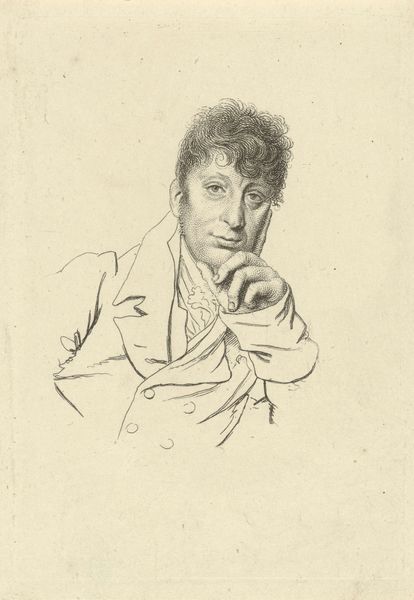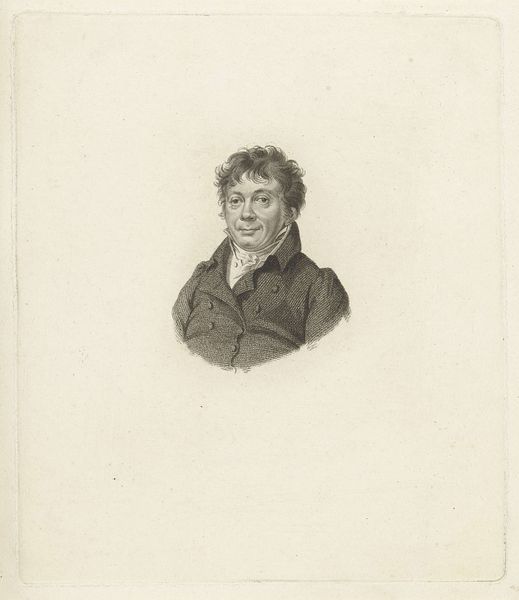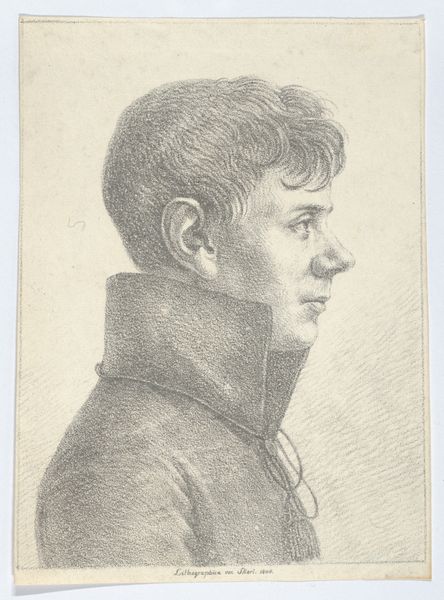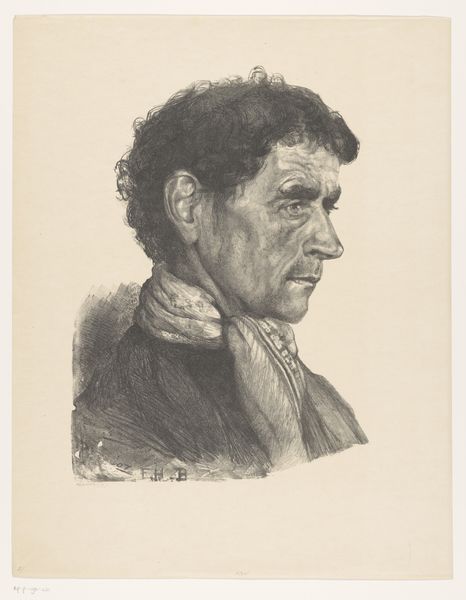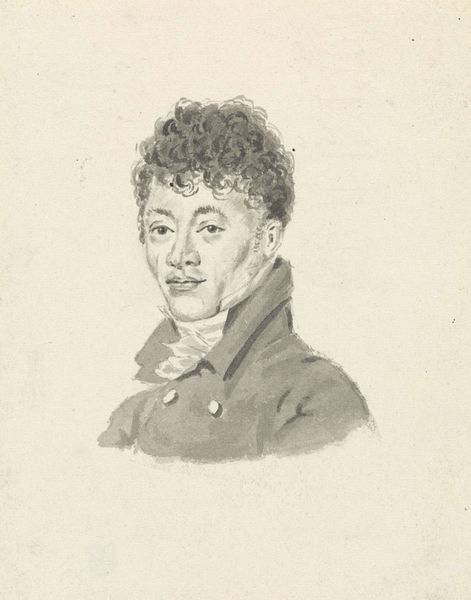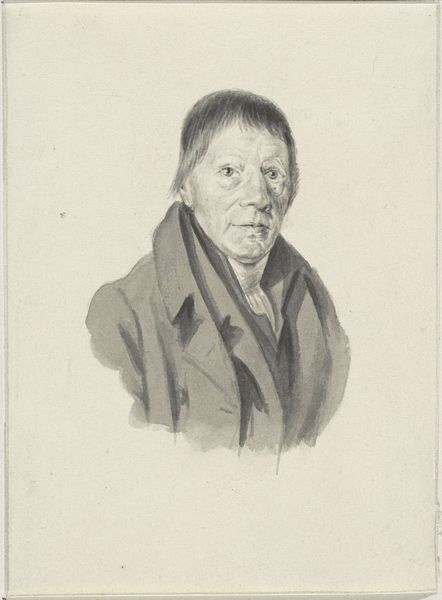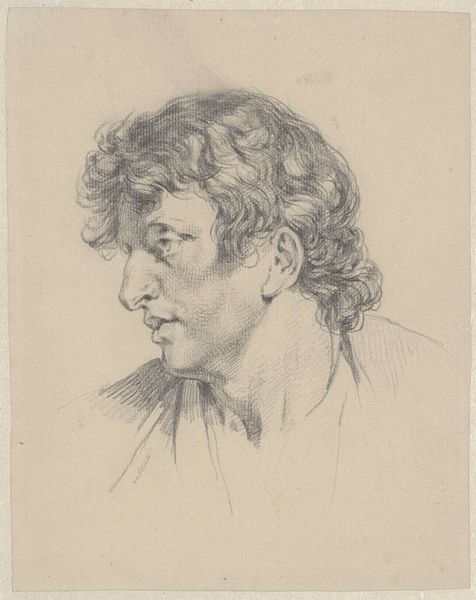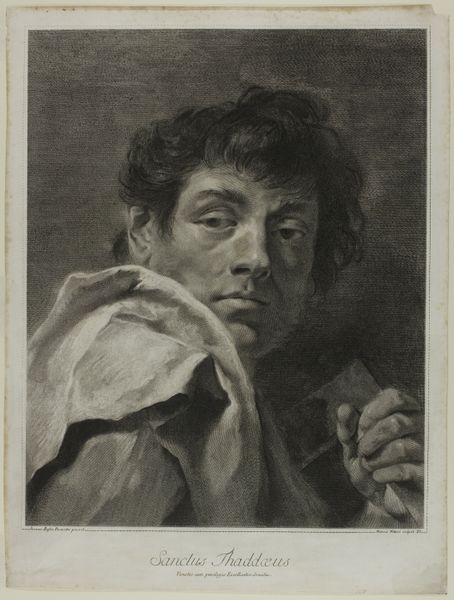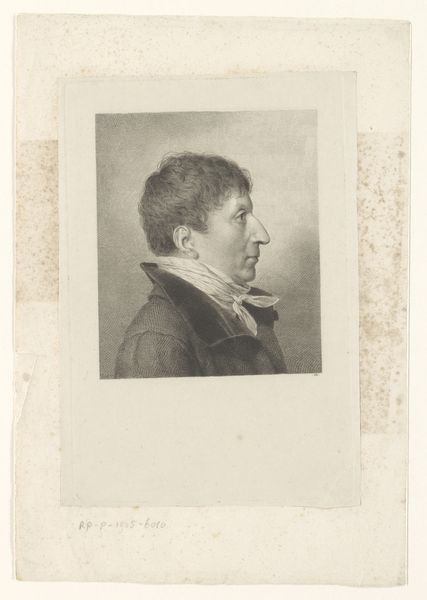
Dimensions: height 134 mm, width 97 mm
Copyright: Rijks Museum: Open Domain
Editor: We are looking at "Portrait of Christian Henning", likely created between 1751 and 1822, with pen, pencil and ink. It looks very simple, but the lines seem to capture his likeness with a rather earnest quality. What compositional elements stand out to you? Curator: The efficiency of line is compelling. Note the stark contrast between the lightly sketched face and the more heavily rendered coat. The artist employs varying line weights, creating depth and emphasizing the subject’s gaze. The lack of background removes any external narrative, focusing solely on the form. Editor: Do you think that lack of background enhances the feeling that we’re seeing him as he is? Or does it leave you wanting more? Curator: Interesting. Does the truncation suggest an unfinished quality or perhaps point to a focus on capturing pure likeness? Semiotically, the fragment emphasizes essence over context, challenging our impulse for complete representation. Consider also how the economy of detail draws attention to the rendering of the face and his eyes, which become all the more present by contrast to the void. Editor: So, by stripping away the context, the drawing pushes us to see and understand the person being represented more deeply, right? Curator: Precisely. Through reduction, the artist invites closer scrutiny of form and line, inviting us to decode its visual language. Editor: That’s really insightful; looking at the contrast now, I do notice things that I hadn’t paid much attention to before. Curator: Indeed. It's through examining these structural relationships and deconstructing form that we may discern deeper meanings.
Comments
No comments
Be the first to comment and join the conversation on the ultimate creative platform.
